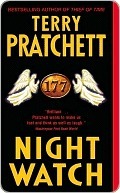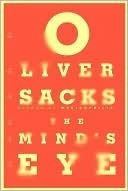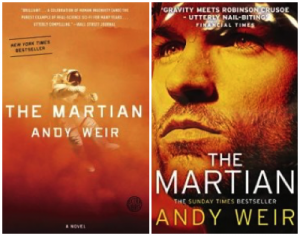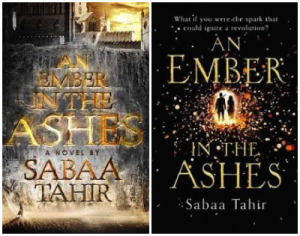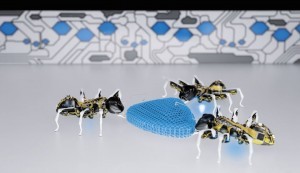Rachel Neumeier's Blog, page 333
July 10, 2015
A new summertime cake
Just tried this new very easy cake and I liked it a lot, so I thought I’d share it with you all.
Raspberry Ricotta Cake
1 1/2 C flour
1 C sugar
2 tsp baking powder
3/4 tsp salt
3 eggs
1 1/2 C ricotta, except that for some mysterious reason, I dislike ricotta, so I used cottage cheese, blending it to smooth out the texture.
1/2 tsp vanilla
1/2 C butter, melted
1 C frozen raspberries, or I bet fresh would work
Now, here is why the cake is so simple: You make it as though you were making muffins, not as though you were making a cake. In fact, this recipe is more of a breakfast cake or snack cake than a desert cake. I didn’t make any kind of glaze or frosting for it, either, because I like mildly sweet things better than really sweet things in general. I didn’t time the preparation, but I’m guessing from getting out the bowls to putting it in the oven took maybe five minutes.
Anyway:
Whisk together the dry ingredients.
Whisk together the wet ingredients except butter. I used an immersion blender because I wanted to smooth out the cottage cheese anyway.
Fold the flour mixture into the egg mixture. This means stir it in fairly gently with a spoon. Fold in the butter. Fold in 3/4 of the raspberries. Pour the rather thick slightly lumpy batter into a 9 inch square pan you’ve sprayed with oil. Sprinkle the remaining raspberries over the top.
Bake at 350 degrees for 50-60 minutes. Let cool 20 minutes and serve.
I expect this cake would freeze just fine, but I don’t know, because it didn’t last very long. I’m going to make it again soon because we grow our own raspberries and still have quite a lot in the freezer from last year.

Starting a series in the middle
So, I recently happened across this post by Sara Brady at Barnes and Noble, suggesting decent starting points for someone wanting to come into a long series, but not necessarily wanting to start right at the beginning. Interesting idea!
The series Brady mentions include:
1. The Pride series by Shelly Laurenston, a UF/Paranormal series I’ve never heard of that does sound possibly like fun, though do I really need another long UF/Paranormal series to get into? Even if there are honey badgers and male lions exclaiming (in human form) about their beautiful hair?
2. The Animal Magnetism series by Jill Shalvis, which from the description sounds like a romance series involving veterinarians and small-town life. Brady says, “Like all Shalvis heroes, the dudes are great big burly manly men, and in this series they do things like heal wounded puppies.” I must admit, that sounds charming.
3. The In Death series by JD Robb. I’ve listened to a couple of these, chosen at random from the local library’s collection of audiobooks, and they were just okay for me. Evidently the series is up to 49. Wow. Brady suggests reading at least the first couple in order. I didn’t and it was fine, but I’m not saying she’s wrong, maybe I’d have rad the whole bunch if I’d started properly at the beginning.
4. The Night Huntress series by Jeaniene Frost, a paranormal series that I’ve heard of but haven’t tried. Brady suggests reading in order.
Well, this was all very interesting, so I wandered down to my own library, perused the shelves, and I think I’ve identified six series of each type. I think in some cases particular authors have written both series that can be read out of order and series that really ought to be read strictly in order. Here they are:
Type A: Series that may actually be better if you start in the middle:
1. Terry Pratchett’s Sam Vimes series. Guards! Guards! is readable, I guess, but the series gets massively better as it goes along. If I’d started with the first one, I doubt I’d have gone on to the second. Instead, I happened to start with Night Watch, still probably my favorite of all the Diskworld novels. Then I worked my way out from the middle until I’d read the rest of the series. This worked really well and I always recommend Night Watch to someone wondering where to start the Diskworld books.
2. Dorothy Sayers’ Peter Whimsy mysteries. There is such a sharp division between the ones that are cool, clever detective stories and the ones that engage the reader’s emotions. Gaudy Night is the novel that demarcates that line. I would definitely suggest anyone start with that one. Then read the successive ones in order. Only then would I suggest going back to the earlier ones.
3. Lois McMaster Bujold’s The Vorkosigan series. They all stand alone, but I can see that different books would very likely have greatest appeal for different readers. I can think of one person who started with the early Miles books, but since she is especially into romances, I would have suggested starting elsewhere – with Shards of Honor or possibly even Komarr, though I wouldn’t ordinarily suggest starting with that one. But for someone who loves space opera best, then I wonder if, Warrior’s Apprentice wouldn’t be the best starting point.
4. If someone wasn’t keen on tackling CJ Cherryh’s immense Foreigner series and wanted to skip the introductory part, where would you suggest they start? You probably know that the series is broken into fairly self-contained trilogies, but that doesn’t give as much guidance as it might because after all there are five trilogies in the series now (and the start of a sixth).
As it happens, my favorite single book in the series is Explorer. Unless you have a better memory than I do for the very unmemorable titles in this series, you won’t remember which book is which, but that is the one where Bren et al go out to the abandoned station, meet the kyo, and rescue the people on the station. I absolutely love seeing Bren at his best as he deals with the station personnel and with the kyo. That is the third book of its trilogy, and it’s the second trilogy of the series, so that forces me to suggest that a new reader skip no more than the first trilogy and start with the 4th book, Precursor. I know skipping just the first three books doesn’t get you very far ahead, but there you go.
5. Steven Brust’s Vlad Taltos series. Although I really, really love the first couple of books — Jhereg and Yendi — the different books are all so distinct that even though the storyline is continuous, the reader can start anywhere. After all, Brust didn’t write them in internal chronological order, so that makes sense. Although I sure wouldn’t suggest anybody start with Teckla, by far the low point in the series. And Athyra would not be my first choice of a starting point, either. And perhaps not – well, never mind, the point is that although there are places I wouldn’t suggest a new reader start the series, there are lots of books in the series that would make good entry points.
6. I’m of two minds about Ilona Andrew’s Kate Daniel’s series. I think it takes off at the 3rd book. But I wouldn’t necessarily have wanted to skip the build-up provided by the first couple of books either, so I don’t know that I’d suggest someone actually start with the third one. It’s a tough question.
Type B: Series you ought to start at the beginning:
1. Terry Pratchett’s Tiffany series. I suspect this set of novels works best if you start at the beginning, with Wee Free Men. Not that you couldn’t enjoy them out of order, but Tiffany’s character arc builds so smoothly from one book to the next that I would never suggest starting in the middle the way I do, routinely, with the Vimes series.
2. Barbara Hambly’s Ysidro series. It’s hard to beat Those Who Hunt the Night as a place to start the series. Also, it’s a really good standalone novel. Yes, yes, all the novels in this series stand alone. Even so, I think the series would probably not work as well starting anywhere but at the beginning.
3. Elizabeth Moon’s Trading in Danger series. This space opera story is a set of five novels and they do not stand alone very well. The storyline flows straight though from front to back. I can’t remember whether there are actual cliffhangers, but it wouldn’t surprise me. Unlike the Vorkosigan books, I would never suggest starting anywhere but the front or going in any order but straight through. Incidentally, this is quite a good series and I definitely do recommend it to anyone who enjoys space opera.
4. While we’re on the subject of space opera, Tanya Huff’s Valor series is another one that undoubtedly works best read in order. The books are fairly self-contained, but various important plot elements flow from one to the next. I don’t think keeping to the published order is as important as it would be for Moon’s series, but probably more so than for the Vorkosigan series.
5. Lois McMaster Bujold’s Sharing Knife series. The story is just too continuous. There’s nowhere to start but at the beginning. Straight through, that’s the ticket.
6. Dorothy Dunnett’s Lymond chronicles. Really, you must start at the beginning. Very dense, complicated books; you’re liable to get lost if you go wandering around out of order.

July 9, 2015
Oh, look, the World Fantasy Nominees have been announced
Via tor.com, the WFA nominees:
Novel:
The Goblin Emperor, Katherine Addison (Tor)
City of Stairs, Robert Jackson Bennett (Broadway; Jo Fletcher)
The Bone Clocks, David Mitchell (Random House; Sceptre)
Area X: The Southern Reach Trilogy, Jeff VanderMeer (Farrar, Straus & Giroux)
My Real Children, Jo Walton (Tor; Corsair)
I’m very pleased to see this. Plus, hey, I’ve read two of ’em and sort of mean to read MY REAL CHILDREN one of these days. Always nice to have some basic notion of how the nominees stack up. Naturally I’m rooting for THE GOBLIN EMPEROR. If I read the rest of them and really, really, really think one of the others should win, well fine. But I doubt very much I’ll wind up actually *liking* any of the other nominees better.
I did like CITY OF STAIRS quite a bit. I’ve heard enough about some of the others to think this is a pretty good set of nominees.
Click through if you want to see the full list. I’m not familiar with any of the short work, although I’ve heard of “We Are All Completely Fine” — great title. Oh, rereading the list, yes, I did read “Where the Trains Turn” by Pasi Ilmari Jääskeläinen. I thought it was a good story, creepy and atmospheric. I’m not really into horror, but I certainly recommend it if you happen to like creepy stories. There’s a link from tor.com because it’s one of theirs.

I hate to sound unkind, but really?
You remember that guy a couple years ago who bought a couple fluffy white ferrets because he was told they were poodle puppies?
Of course a lot of the people who laughed about this declared mockingly that he had been duped and mistaken rodents for puppies, which doesn’t do much for their reputation, either, as everyone (surely?) knows ferrets are mustelids — weasels — not even vaguely similar to rodents. Also, it’s true the ferrets were white and fluffed up and fed steroids to make them plump, so they didn’t look a lot like normal healthy ferrets, either. Though . . . still, not much like puppies.
Anyway, that guy seems to have been joined in his inability to recognize a dog by a man in China who raised a couple of bear cubs for years thinking they were dogs.
Mind you, the linked article implies that he should have guessed his puppies were actually bears when they turned out to have an inclination toward catching and eating chickens. Uh, really, can the author be unaware that from time to time real dogs also enjoy catching and eating chickens? There are lots of distinguishing characteristics between bears and dogs, but that is not one of them.
To be fair, I hardly know whether this man had picture books with the Chinese equivalent of “B is for Bear” in them when he was growing up. Though he found out his mistake by going to a wildlife exhibit, so apparently wildlife exhibits might have been around? If you never see a bear, then I guess you might not know what bears look like? On the other hand, bears really do not look like or behave like dogs.
Well, it’s hard to imagine, but then you do apparently really get guys shooting cows because they think they’re deer.
I personally met a woman who had a “Standard Chihuahua” that was actually a Boston Terrier. At least it was actually a dog.
I do wonder what we’ll hear of next. Someone buying a goat because they’re told they’re getting a great deal on a rare Icelandic pony?

Recent Reading: THE MIND’S EYE by Oliver Sacks
People are so different. The way people experience the world is so different. The way your brain handles what it tells you about the world is so peculiar.
THE MIND’S EYE makes a point of showing us just how different our sensory worlds can be.
A person can lose the ability to read even though nothing interferes with his ability to see the actual letters – word-blindness, alexia, a loss of comprehension of written symbols without losing sight. Yet an inability to read may not be associated with an inability to write, though a person with this kind of word-blindness won’t be able to proofread what he had written. Except that tracing letters in the air with his finger or with his tongue on the roof of his mouth – “writing” them – may allow comprehension. He might then “read” by the motor act of “writing.”
Or similarly a person might lose comprehension of visual objects, though again without losing actual sight. This is associated with posterior cortical atrophy – but there are so many variations in how the problem is actually experienced.
When Lilian came back, and I had packed my bag and prepared to go, she said, “You must take the rest of the biscotti with you” – but now, bizarrely, she could not find them, and became upset, almost frantic, at this. They were right on the table in their dish, but since the dish had been moved she no longer knew where they were, or even where to look. She seemed to have no strategy for looking. She was, however, quite startled to see my umbrella on the table. She failed to recognize it as an umbrella, noticing only that something curved and twisted had appeared – and wondered, for a half-serious moment, if it was a snake.
Think of living life that way – able to see, but not to make sense of what you are seeing. How strange and peculiar! And what kinds of strategies would you come up with to help you cope? Some people find music helps them organize the world; others recognize color and pattern long after they lose the ability to recognize objects in the normal way.
Some people are not word-blind or object-blind, but face-blind – unable to recognize the faces of even familiar people, especially if seen out of context. Sacks himself evidently lives with quite severe face-blindness.
Personal note: I can actually understand this better than object blindness because I have rather poor face recognition myself, though it’s not nearly as severe as what Sacks describes. But it takes years of frequent contact before I can reliably recognize someone. Voices are much more reliable for me, and not infrequently the way someone walks is distinctive even if I can’t recognize the person by his face. I use distinctive features for recognition, just as Sacks describes. I sometimes have trouble when watching a movie, because often all the male actors look the same to me – white men with short, dark hair, all tallish and all about the same age. I literally can’t tell them apart. Actresses aren’t such a problem because generally women at least style their hair differently.
When I was teaching, I could easily go a whole semester unable to tell two students apart because they both had long, straight blond hair. If I had them in one class after another, though, they would eventually look distinctive and then I couldn’t see how I’d ever thought they’d seemed so similar.
I didn’t know that this was unusual until I started proctoring large exams, where the students had to show ID before entering the exam room, and I realized I found it much more difficult than other grad students to tell whether the ID matched the student’s face or not. This was similar to realizing that I have a good deal more trouble than most people in picking out one person’s speech in a crowded room of various conversations. I didn’t know that this was unusually difficult for me until my twin brother commented about the same phenomenon and then the realization clicked into place. I wonder whether the two tendencies are linked or whether it’s just chance that I have trouble both in recognizing faces and in picking specific voices out of a crowd? And I wonder how common these types of perceptual deficiencies are in introverts versus extroverts?
Anyway, according to Sacks, some degree of face-blindness is not particularly rare, with perhaps as much as 10% of the population being noticeably below average. Sacks also notes that that people with face-blindness also often have difficulty recognizing other specific things, such as distinguishing different types of fruits by sight, or recognizing different kinds of birds. Those examples seem strange to me. I can’t imagine being unable to distinguish an apple from a pear or a chipping sparrow from a song sparrow. But I can easily think of other categories of things I can’t tell apart. I can’t tell cars apart very well if they’re roughly the same color, and it’s not unusual for me to walk up to someone else’s blue car and look for dog crates in the back to see whether it’s mine or not. I always park in roughly the same place in parking lots to reduce the problem. I wonder how much of this is interest level. I don’t care about cars at all. But the result is, if I were in an accident, I’d be like, “Well, officer, I don’t know, it was blue or maybe dark gray. Or green. Four doors or two? Well, I don’t know. Driver? Well, I didn’t really notice the driver. But he had an Affenpinscher in the car with him. Of course I’m sure. It was definitely an Affenpinscher.”
Then you get people on the opposite side of the spectrum.
“I was on my way into the subway in Soho when I identified someone fifteen feet ahead of me, back turned, . . . as a man I had knew, or had seen before. In this case, it was Mac, who used to be a family friend’s art dealer. I had last seen him briefly two years earlier, at an opening in midtown. I’m not sure I’ve ever spoken with him beyond an introduction a good ten years ago.”
Unbelievable. Not that I don’t believe it. It’s just . . . unbelievable.
Then we get the various ways in which people deal with complete blindness. Again, people are so very different. We see people who lose not only visual perception, but the memory of vision and any comprehension of the phenomenon of sight. On the other hand, Sacks describes another person, Zoltan Torey, an Australian psychologist, who after he went blind, built up in his head such a clear and detailed and concrete visual representation of the world around him that he don’t hesitate to go out on his roof and replace the guttering by himself. Sacks notes that Torey describes his experience of blindness in OUT OF DARKNESS, in case you’re interested.
Why do some people lose the very concept of vision when they go blind, and others build up a complete visual world in their heads? Well, visual memory is highly variable; maybe that’s why. Listen to Sacks’ account of a moment with his mother:
My mother was a surgeon and comparative anatomist, and I had brought her a lizard’s skeleton from school. She gazed at this intently for a minute, turning it round in her hands, then put it down and without looking at it again did a number of drawings of it, rotating it mentally by thirty degrees each time, so that she produced a series, the last drawing exactly the same as the first. I could not imagine how she had done this. When she said that she could see the skeleton in her mind just as clearly and vividly as if she were looking at it, and that she simply rotated the image through a twelfth of a circle each time, I felt bewildered …
Yes, I’d feel bewildered, too. Wow.
Yet, later, Sacks meets a vascular surgeon who – not blind – evidently somehow has no conscious awareness of visual imagery at all. I’m a highly visual person, that’s why Martha Wells (for example) appeals to me so much as a writer; I totally see the world she is describing. Setting matters to me so much in a novel. So I can’t imagine what’s in this vascular surgeon’s head. How can you think much less do surgery without a visual image of what you’re working with?
I suppose this phenomenon, of seeing but without a conscious awareness of visual imagery, must be similar to blindsight – a complete loss of the conscious awareness of all sight, but without losing sight itself. The damage is all in the brain, not the eyes. A person with blindsight feels blind. But, if told to put a letter in a slot, she will turn the letter vertically or horizontally to match the orientation of the slot and put it through – without any conscious perception of sight at all.
How extremely odd that we can all live in such different sensory worlds. And how difficult to realize that the sensory experience of our friends and acquaintances may be so different from our own. I love a well-drawn alien species, but one doesn’t need to look very far from home to find a quite distinctive experience of the world. Sacks’ books are among the best for creating the realization that many people live in a world that’s just not the same as the one you live in.

July 8, 2015
Oh, hey, look what’s out —
From Maureen at By Singing Light — the new Chalion novella is out! I didn’t even know there was supposed to be a new Chalion novella!
Also, I’d heard of this, but Maureen provided a link to Charlotte’s Library, who provides actual details about — are you following this? — Patricia McKillip’s new book, due out next spring. It’s called KINGFISHER, evidently.
Anyway, just thought you might like to know. That Chalion novel is in my near near near future, as in I expect I’ll read it tonight.

US vs UK cover art
This kind of thing is always interesting: a comparison of US vs UK covers, via BookRiot.
In general, I hear, US readers prefer the US covers and UK readers the UK covers, thus implying that marketing departments actually sort of know what they’re doing, sometimes.
Here is the comparison for Weir’s THE MARTIAN:
US cover on the left, UK on the right. Which do you prefer? Even though SF covers often bore me — a dust storm and no details — I strongly, strongly prefer the US cover in this case. The UK cover looks like it might almost belong on a romance.
Here’s another:
Very different, aren’t they? Again, I prefer the more artistic, maybe more literary, US cover. Just another sheep following the herd, that’s me! Of all the examples shown in the BookRiot post, I prefer the UK cover only once. If you’re interested, you can click through and see what you think.

Progress! Sort of
Last night I tweeted something that was essentially: Yay! Just figured out a plot point! Alas, lotsa rewriting tomorrow.
Then someone asked about how I edit — by rewriting from scratch or messing around with the messed-up chunk or what.
So let me unpack the process a little, always remembering that process is highly variable for different writers, so this is just me.
What happened last night the moment I turned off the laptop: I have been bothered by feeling that the book (this is THE WHITE ROAD) is too complex and cluttered with characters. I just passed 100,000 words and I am at this point hardly looking for length; I want to get into the endgame and tie up the story in some reasonable number of words.
I had recently introduced a character but didn’t have anything important for him to do in the endgame, so that was a problem. What could I do to make this new character integral to the plot?
The standard advice to combine characters if you can drifted through my mind.
Ah hah! I could cut that character and give his role to a different character, already introduced earlier. AH HAH! Now the whole plot can hinge on the fate of this particular character. Because this and that and this other thing can ALL depend on what happens with this one character! Instantly the plot smoothed out and became way more coherent.
Doing this revision will require going back 100 pages, sending Character A from one place to another and dropping him into Character B’s situation.
The challenge: Moving Character A from one place to another, which will probably require a kind of magic which I’ll eventually have to foreshadow cause right now it comes out of nowhere. Coming up with a reason for the actual protagonist and her friends to go after him rather than appealing to adult authority for help (haven’t got a reason for that choice yet). Justifying a bad guy doing this instead of that, which probably means setting two bad guys at odds instead of having one be the servant of the other. Rewriting a scene to make that change.
The easy part: removing Character A from the intervening scenes in which he is no longer present. It was a crowd anyway, so being able to get rid of a character is only beneficial. Revising the last 20 or 30 pages because Character A’s situation cannot be exactly like Character B’s situation. Removing Character B completely, and thank heaven for the Find command.
The goal: this revision will should put Character A in the thick of things with the protagonist. I think. I’m not sure whether the other secondary characters will be right there during the climactic scenes or not; maybe they’ll fall by the wayside or catch up later or something. Some aspects of this are going to be tricky to manage. But I think the upshot is going to be tightening up the plot and getting to the climactic scenes faster.
Incidentally, my other YA novels worked out like this:
CITY — less than 90,000 words
ISLANDS — 118,000 words
BLACK DOG — 125,000 words
THE KEEPER OF THE MIST — um, I think 118,000 or so again for that one.
So with THE WHITE ROAD already at 100,000 and me not even in the endgame yet, well. Anything that can help tighten the plot and move things along is indeed greatly to be desired.

Censorship by trolls
Here’s a thoughtful post by Anne R Allen: “Public Shaming, Cyberbullies, and the Hive Mind: Fighting ‘Censorship by Troll'”
I personally feel that you should suspect you are wrong to join in an internet mob if:
You didn’t read a reasonable chunk of the work somebody’s being mobbed for, but took a line out of context when you saw someone tweet it.
You didn’t check out the person at all, but assumed she was a bad person because that one quote looked bad and anyway, good people don’t get mobbed.
You feel that a person deserves to be fired from their job and rendered unemployable because they disagree with you about something.
You feel justified in joining an internet mob because you are so very righteous.
You feel justified in joining an internet mob.
I think Allen is essentially correct to say:
Once an individual joins in an attack on a designated victim, s/he becomes assimilated into the collective hive mind and seems to lose the ability to behave as an individual. . . . This means that trying to reason with an individual member of the hive is useless. Otherwise sane people will display a complete lack of empathy—behavior that’s usually seen only in a true sociopath.
It’s as if people are saying: “I’m not really a sociopath, but I play one on Twitter.”
Yes, a bit like the way normally polite, tolerant adult people sometimes scream insults at somebody who offends them when they’re behind the wheel of a car, only an order of magnitude worse.
I won’t say I always think a mob is wrong. Not about what they’re objecting to. But I don’t know that I ever think a mob is *justified*. You perhaps recall when Katherine Hale stalked a reviewer who gave her first book a one-star review. It was a horrifying incident. But it had *several* horrifying aspects, not just one:
1. Hale stalking the blogger = horrifying
2. The Guardian letting Hale publish this piece that looks to me like it is a first-person account of psychological disturbance contributing to illegal behavior for which Hale has to be criminally liable. The Guardian’s role in this whole situation is if anything even more horrifying than Hale’s.
3. The internet mob piling on Hale, who appears, on actually reading her piece in the Guardian, to be a disturbed individual. That is also awful.
People are sometimes going to be — gasp! — wrong on the internet. But even when they’re genuinely wrong, a mob is seldom going to improve the situation. It’s ugly. Too often it turns vicious.
Personally, my philosophy, which I haven’t always lived up to but which grows firmer every time I see a mob in action, is: if I see someone say something outrageous online, or even more if I see someone accused of saying something outrageous online, I will never regret it if I put off responding for a week.

July 7, 2015
Welcome to the future —
Look at this: an army of giant robot ants
Someday, just maybe, the modern factory worker could be replaced completely by technology. It’s a scary thought for some. What’s creepier still is that the factory worker of the future could be an ant. Actually, an army of artificially intelligent cyborg ants. Synthetic critters that are smart enough to work together to crush a common goal.
Gosh, I . . . can’t wait?
Anyway, these little guys — not so little; the size of your hand, more or less — were the brainchildren of a German engineering company called Festo.
You know, when I think of living in the future, here’s what I want:
Self-driving cars.
Self-driving cars that fly.
Eternal youth and health.
Matter replicators that end resource scarcity.
Not previously on my list: giant robot ants. But as evidence that we are living in the future, well, they certainly do that.


